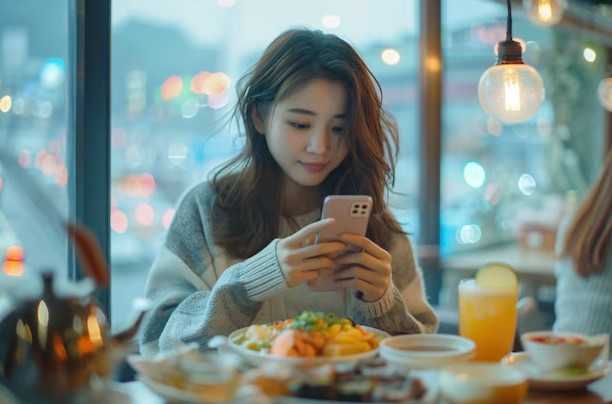10 Simple Tricks to Boost Your Smartphone Photography
— March 2, 201610 Essential Tips to Improve Your Smartphone Photography Skills
Taking high-quality photos with your smartphone isn’t just about having an advanced device. It’s about understanding the principles of photography and applying them effectively. While lighting, composition, and depth are important in any form of photography, smartphones have their own unique considerations. This guide outlines ten practical tips to elevate your smartphone photography game. These tips will help you capture images that look professional and polished, whether you’re shooting for personal memories, social media, or even web content for professional platforms.
Take a Moment to Frame Your Shot
Modern smartphone cameras can produce exceptional image quality, rivaling traditional cameras. However, many users still fall into the habit of snapping quick, thoughtless photos. The result? Mediocre shots that lack visual appeal. Taking just a few extra seconds to assess your composition, lighting, and subject positioning can transform your images.
When preparing to take a photo, consider the elements within your frame. Identify the most interesting subjects, adjust the angle to create a sense of depth, and think about where the viewer’s eye will naturally be drawn. Even small tweaks, such as moving a few inches to avoid harsh shadows or tilting your phone slightly for a dynamic perspective, can make a huge difference.
Master Composition Techniques for Balanced Photos
Composition is the backbone of photography, dictating how visual elements are arranged in your shot. One of the easiest yet most effective rules to follow is the rule of thirds. Divide your frame into nine equal sections using two horizontal and two vertical lines. Place your subject along these lines or at their intersections for a balanced and visually engaging result.
For landscape photography, avoid placing the horizon in the middle of the frame, as it creates an unnatural balance. Instead, position the horizon closer to the top or bottom third, emphasizing either the ground or the sky. If you’ve already taken a photo with poor composition, cropping can often salvage it by rebalancing the elements within the frame. Remember, strong composition can turn an average photo into a compelling image.
Get Closer to Your Subject
Smartphones lack optical zoom, relying instead on digital zoom, which often degrades image quality. To avoid grainy or distorted photos, physically move closer to your subject whenever possible. Close-ups capture intricate details, from the texture of a leaf to the expressions on a person’s face, providing an immersive experience for viewers.
When shooting landscapes, getting closer can also help emphasize a specific point of interest, such as a lone tree or a unique architectural feature. Practice taking photos at different distances to see how proximity affects the clarity and emotional impact of your shots. If you frequently take close-up photos, investing in external lens attachments designed for smartphones can further enhance your capabilities.
Avoid Using the Flash
The flash on your smartphone often produces harsh and unflattering lighting, creating unnatural highlights and shadows. It can also wash out colors or cause unwanted reflections, especially in portraits or indoor settings. Instead, rely on natural or ambient light to illuminate your subject.
If shooting in low-light conditions is unavoidable, look for alternative light sources like streetlights, candles, or desk lamps. These create softer, more diffused lighting, adding depth and warmth to your photos. If you must use your phone’s flash, consider diffusing it by placing a thin tissue or translucent material over the light to soften its intensity.
Experiment with Third-Party Camera Apps
The default camera app on your smartphone may be convenient, but it often lacks advanced features that can take your photography to the next level. Third-party apps like ProCamera, Camera+, and Snapseed provide enhanced controls, such as manual focus, adjustable exposure settings, and burst shooting modes.
These apps also allow you to experiment with various features like white balance adjustments and ISO controls, giving you more creative freedom. For users in industries like web development or outsourcing who require high-quality photos for promotional materials, investing in a professional-grade camera app is a worthwhile decision.
Learn to Use Advanced Settings
Understanding the technical settings of your camera app can significantly improve your photography. Adjusting the ISO, shutter speed, and aperture allows you to tailor the camera’s performance to different conditions. For instance, a slower shutter speed can create motion blur, while a higher ISO is ideal for low-light situations.
Many third-party apps include tutorials or in-app guides to help you learn how to use these features effectively. Experiment with different combinations to understand how they influence your photos. The more familiar you are with these settings, the easier it will be to achieve the desired effect in your shots.
Use HDR for Balanced Exposure
High Dynamic Range (HDR) is a powerful tool for achieving balanced exposures in scenes with high contrast, such as a brightly lit sky and a shadowy foreground. HDR combines multiple shots taken at different exposures, blending them into a single image that highlights details in both bright and dark areas.
However, overusing HDR can result in overly processed images that appear unnatural. Use this feature sparingly and evaluate its impact on each photo. Many camera apps offer an automatic HDR mode, which activates only when the scene demands it, ensuring that your photos retain their authenticity while benefiting from enhanced detail.
Apply Filters Thoughtfully
Filters can enhance your photos, but overusing them may make your images look artificial. Instead of applying generic filters indiscriminately, consider the mood you want to convey. For instance, a warm-toned filter might work well for a sunrise, while black-and-white can add drama to a portrait.
Editing apps like VSCO and Snapseed allow you to make precise adjustments to your photos, such as fine-tuning brightness, contrast, and color saturation. Subtle enhancements often produce better results than heavy-handed edits. Striking the right balance ensures that your photos remain visually appealing without losing their natural charm.
Develop Basic Editing Skills
Editing doesn’t have to be intimidating. Learning a few basic techniques can greatly enhance your photos. Adjusting exposure, contrast, and color temperature can bring out details and improve overall image quality. Apps like Snapseed and Lightroom Mobile offer intuitive tools for making these adjustments.
For a polished final look, experiment with cropping, straightening, and sharpening your images. These small tweaks can make your photos look professional and ready for sharing or use in marketing materials. Editing is especially valuable for those in industries like mobile app development or outsourcing, where visual content plays a key role in client engagement.
Keep Your Lens Clean
Smartphones are exposed to dust, fingerprints, and other contaminants daily. A smudged lens can result in blurry or hazy photos, no matter how advanced your camera is. Make it a habit to clean your lens regularly with a soft, lint-free cloth. For tougher smudges, a small amount of lens cleaning solution can do wonders.
Keeping your lens clean is a simple yet often overlooked step that ensures your photos maintain their sharpness and clarity. This tip is particularly important for those capturing content in challenging environments, such as outdoor shoots or bustling cityscapes.
Conclusion
Mastering smartphone photography requires practice, experimentation, and attention to detail. By applying these ten tips, you can elevate your photography skills and produce images that stand out, whether for personal use or professional purposes. From composition and lighting to advanced app features, each step contributes to capturing stunning photos that leave a lasting impression.





